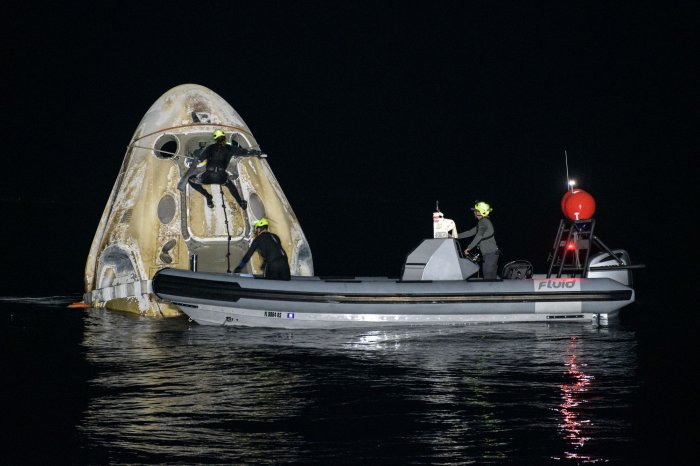
NASA has issued a final request for proposals for privately funded space stations as the agency plans for the eventual retiring of the International Space Station, pictured. Photo courtesy of NASA
ORLANDO, Fla., July 12 (UPI) -- NASA is moving ahead with plans to help fund a new generation of private space stations in an effort to ensure replacements are ready when the International Space Station shuts down in as little as seven years.
The space agency on Monday released a final request for proposals for new space stations. Those proposals are due Aug. 26.
NASA intends to retire the 20-year-old ISS in 2028 because its oldest sections are designed for a 30-year lifespan, though the agency may seek an extension to 2030. All such decisions must be approved by space station partners including Russia, Japan and the European Space Agency.
NASA hopes to fund at least two private company efforts to build new orbiting habitats, and up to four, Angela Hart, manager of the agency's commercial low-Earth orbit (LEO) program, said in an interview.
NASA plans to fund the research and development of such planned space stations for up to $400 million over the next several years, Hart said. She's confident the agency's budget requests for that level of funding will be met.
"We want to support as many folks in the commercial sector that are interested in commercialization of LEO as possible," Hart said.
Plans to privatize the role of the space station in the future are part of NASA's goal to focus on deep space exploration -- namely the moon and Mars.
The space agency has built a case for more commercial use of laboratories in orbit, where such industries as 3D-printed manufacturing and pharmaceutical production can take advantage of microgravity.
Besides the scientific benefits, companies like Houston-based Axiom believe the market for space tourism in orbit is growing. Axiom plans to send three wealthy businessmen to the International Space Station in January.
When NASA held a meeting to gauge interest from the private sector in March, dozens of the biggest names in the space industry attended, including SpaceX, Blue Origin, Virgin Galactic, Lockheed Martin and Northrop Grumman.
NASA also plans to support private efforts to build space stations with expertise and the potential for future NASA business, without direct funding of development.
Nevada-based Sierra Space, a subsidiary of Sierra Nevada Corporation, plans to build a new space station regardless of NASA support, John Roth, vice president of business development at Sierra Space, said in an interview.
"Our vision is not limited to NASA's plan, and we don't want to be limited by that," Roth said.
He explained that he believes NASA should move faster -- the agency currently requires companies to submit a preliminary design by 2025.
"That just seems like a pretty slow schedule for us," Roth said. "We're concerned about the U.S. not having access to low-Earth orbit if the space station is retired. We think getting something in orbit by 2026 or 2027 would be ideal."
NASA, SpaceX complete historic first mission to space station

Support teams work around the SpaceX Crew Dragon Resilience spacecraft shortly after it landed with NASA astronauts Mike Hopkins, Shannon Walker and Victor Glover and Japan Aerospace Exploration Agency astronaut Soichi Noguchi aboard in the Gulf of Mexico off Panama City, Fla., on Sunday. Photo by Bill Ingalls/NASA | License Photo
No comments:
Post a Comment